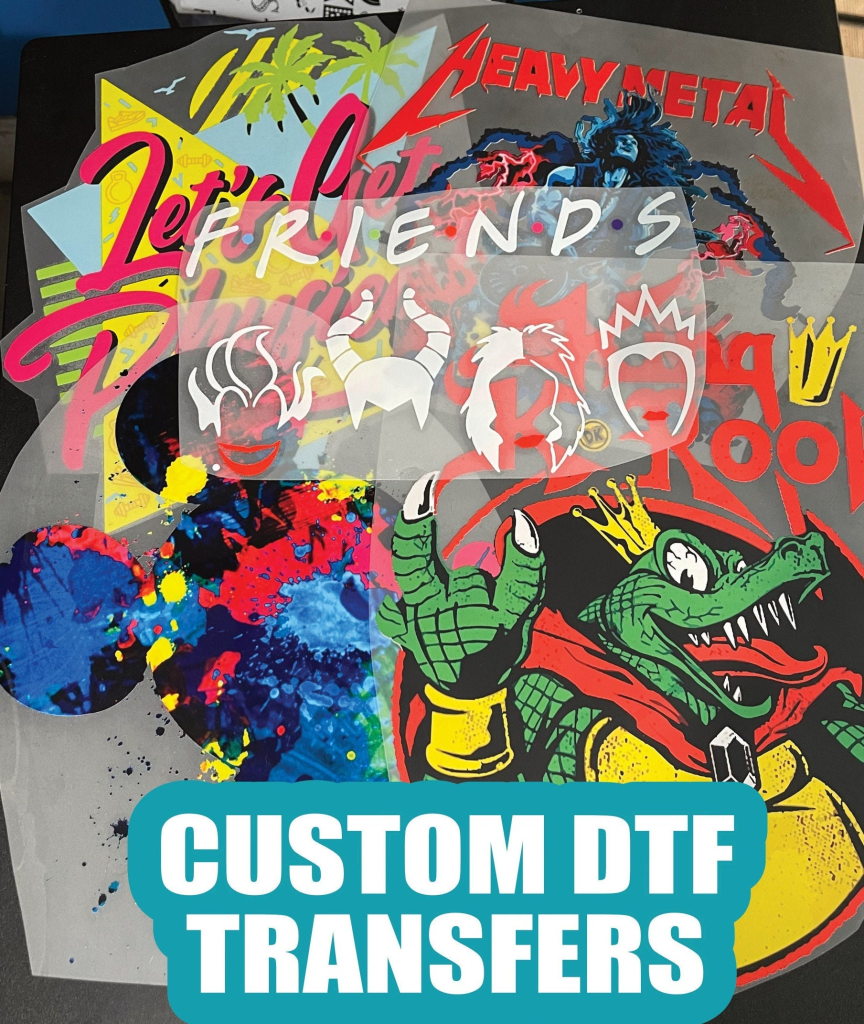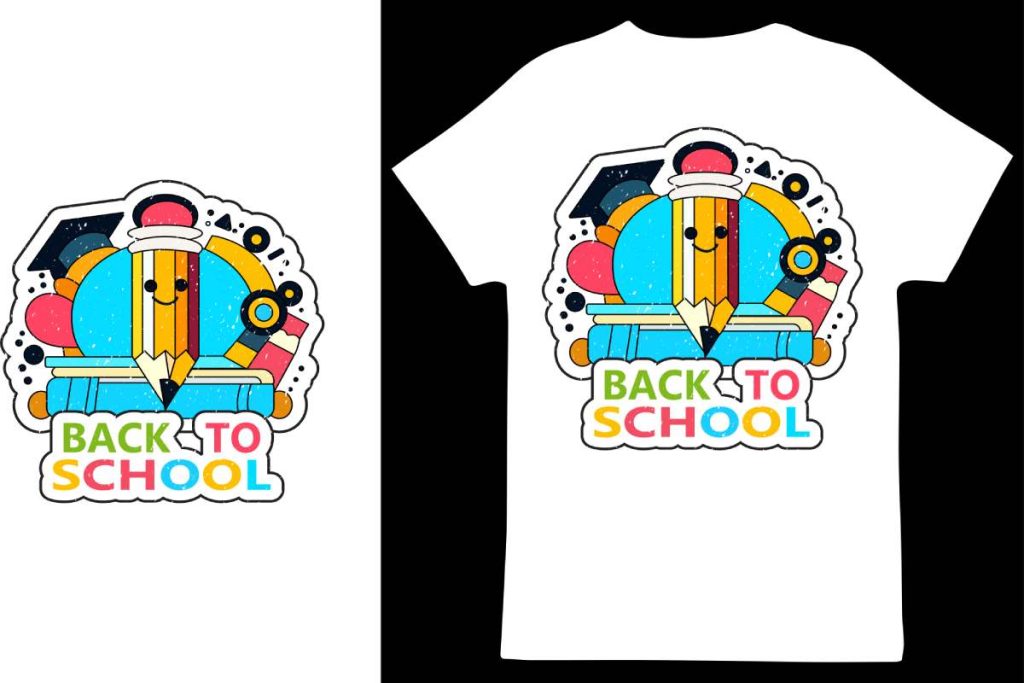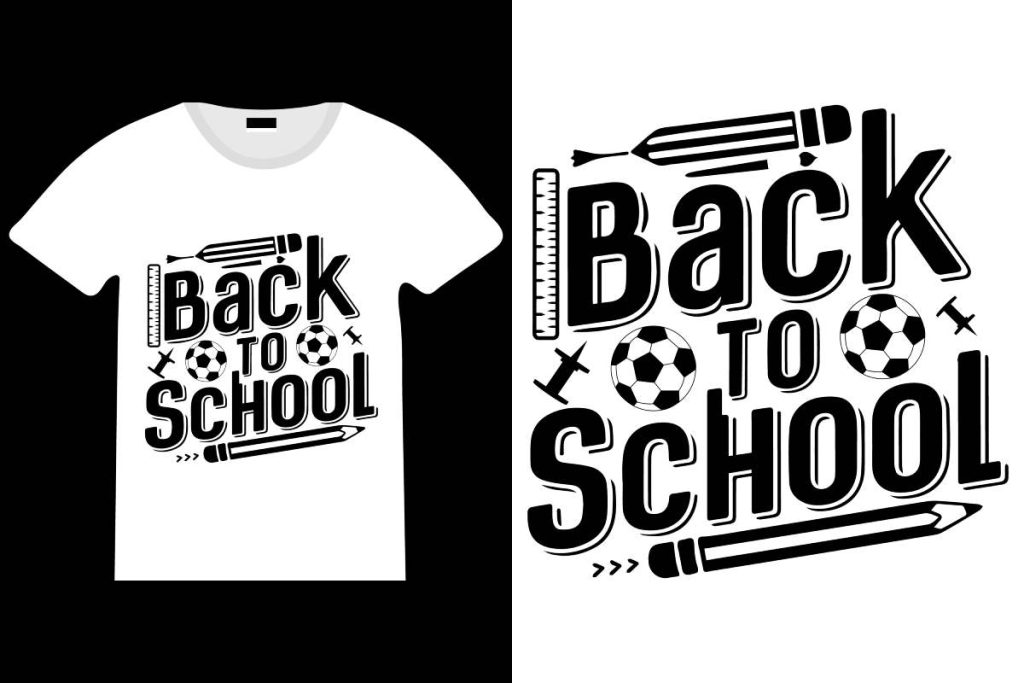DTF transfers, or Direct-to-Film transfers, are revolutionizing the textile printing industry with their innovative capabilities and environmentally friendly practices. This method not only ensures high print quality, but also caters to the growing demand for sustainable printing solutions, making it a favorable choice for today’s conscious consumers. Among the textile printing advantages, DTF stands out for its cost-effective nature, reducing overhead costs while maintaining intricate and vibrant designs. As fashion brands increasingly adopt this technology, the appeal of DTF transfers continues to grow, seamlessly blending style with sustainability. In this article, we will delve into the multifaceted benefits of DTF transfers and how they are shaping the future of textile printing.
In the realm of fabric decoration, the technique known as Direct-to-Film transfers is garnering remarkable attention for its efficiency and affordability. This method, which falls under the umbrella of modern printing technologies, offers unique advantages for textile manufacturers. Among the many benefits, it boasts remarkable print quality and environmental sustainability, making it an attractive option for eco-conscious brands. DTF printing not only provides a viable solution for creating customized apparel but also addresses the cost challenges often faced in traditional methods. As this trend captures the imagination of designers and consumers alike, the potential of DTF printing continues to expand in the ever-evolving landscape of garment manufacturing.
Understanding DTF Transfers in Textile Printing
Direct-to-Film (DTF) transfers represent a cutting-edge advancement in textile printing technology. By utilizing a specialized film to convey vibrant designs directly onto fabric, DTF allows for exceptional print quality, catering to modern consumer demands for intricate and colorful designs. Unlike its counterparts like screen printing, which can be limited in terms of color and detail, DTF embraces a full spectrum of expression, making it the go-to choice for designers aiming for high-impact visual effects.
Furthermore, the DTF process stands out for its efficiency in printing. This method eliminates the need for multiple screens or extensive setup time, enabling quicker production runs without sacrificing quality. As fashion evolves to prioritize quick turnarounds and customization, DTF printing ensures that brands can keep pace with market demands while maintaining an edge in creativity and reliability.
Sustainability in DTF Transfers
Sustainability is a crucial topic in today’s textile industry, and DTF transfers provide a refreshing solution to the challenges of traditional printing methods. One of the advantages of DTF is its minimal water usage and reduced waste generation. Environmentally conscious brands are increasingly focused on techniques that minimize their environmental footprint, and DTF printing aligns perfectly with these sustainability efforts. This not only helps to reduce waste but also meets consumer expectations for eco-friendly practices.
As sustainability becomes a standard expectation rather than a competitive advantage, adopting DTF technology enables brands to position themselves as leaders committed to environmental responsibility. By choosing DTF transfers, companies can efficiently fulfill their production needs while adhering to stringent sustainability goals, ultimately appealing to a growing segment of environmentally-conscious consumers.
The Versatility of DTF Printing
DTF printing is celebrated for its impressive versatility, which allows for printing on a wide array of fabrics, from lightweight cotton to heavier blends. This capability is crucial for brands aiming to offer diverse product lines, as it facilitates creativity without compromising on quality. Designers can explore various fabric types and textures, confident that their intricate designs will be reproduced with accuracy and vividness only achievable with DTF technology.
Additionally, the DTF process accommodates both light and dark materials, allowing businesses to expand their offerings beyond simple prints. This adaptability fuels innovation in design, enabling brands to cater to consumers’ desires for uniqueness and personalization in their apparel. As the market evolves, DTF printing is bound to play an essential role in helping companies stand out in a crowded landscape through creative and diverse fabric applications.
Evaluating the Cost-Effectiveness of DTF Transfers
When assessing printing methods, cost-effectiveness is a primary concern for businesses, and DTF transfers deliver impressive savings in both time and resources. Although initial capital investment in DTF printers may be higher than traditional techniques, the reduced cost per print often leads to significant long-term savings, especially for brands focused on high-volume production. This operational efficiency positions DTF as a smart investment for businesses aiming to maximize profitability.
Moreover, DTF’s streamlined printing workflow minimizes labor costs and downtime associated with more complex setups in traditional methods. This allows businesses, especially small to medium-sized enterprises, to operate more efficiently and respond more quickly to market demands. As the apparel industry’s pace quickens, companies that adopt DTF transfers can meet consumer expectations for both cost and speed, thereby enhancing their competitive edge.
User-Friendly Advantages of DTF Printing
DTF printing is not only effective but also remarkably user-friendly, making it an ideal choice for novice printers and smaller companies. Unlike traditional textile printing methods, which can involve complicated setups and long learning curves, DTF technology simplifies the production process considerably. This ease of use encourages new entrants to the market, empowering them to diversify their product offerings with minimal training.
Additionally, the accessibility of DTF transfers allows businesses with limited resources or technology to enter the textile printing arena. As entrepreneurs venture into new printing opportunities, DTF presents them with a manageable yet effective solution, propelling the growth of this technology while fostering innovation and creativity within the industry.
The Future Outlook of DTF Transfers
The future of textile printing holds exciting prospects, particularly for technologies like DTF transfers. As consumer preferences increasingly shift towards customization and unique designs, DTF is well-positioned to meet these demands. The adaptability of DTF technology will enable brands to react to market trends swiftly, positioning them as leaders in the growing landscape of personalized fashion.
Moreover, ongoing advancements in DTF printing techniques promise improvements in quality and efficiency, paving the way for broader adoption across the industry. As manufacturers recognize the benefits of DTF in terms of sustainability, cost-effectiveness, and print quality, the technology is set to redefine norms in the textile sector. As the demand for sustainable practices escalates, DTF will continue to emerge as a driving force in the evolution of textile printing.
Frequently Asked Questions
What are DTF transfers and how do they differ from traditional textile printing methods?
DTF transfers, or Direct-to-Film transfers, are a modern textile printing technology that allows for high-quality prints on various fabric types. Unlike traditional methods such as screen printing, which can be labor-intensive and require extensive setup, DTF prints directly onto a film, making the process faster and less resource-intensive. This efficiency not only reduces labor costs but also minimizes waste, aligning with sustainable printing practices.
What are the advantages of using DTF transfers in textile printing?
The advantages of DTF transfers include superior print quality, flexibility in fabric application, and cost-effectiveness. DTF technology produces vibrant colors and intricate designs, appealing to modern consumers. Its sustainability features, involving reduced water and waste, further enhance its appeal as brands strive to be environmentally responsible in their production processes.
Is DTF transfer printing a sustainable option for textile production?
Yes, DTF transfer printing is considered a sustainable option due to its minimal water usage and lower hazardous waste production compared to traditional printing methods. As brands increasingly prioritize eco-friendly practices, adopting DTF technology helps reduce the environmental footprint of textile manufacturing.
How does DTF printing ensure high print quality on various fabrics?
DTF transfers utilize advanced printing techniques that allow for vibrant and detailed prints on a wide range of fabrics, including both light and dark textiles. The ability to print intricate designs while maintaining excellent color reproduction makes DTF a preferred choice for designers and brands seeking quality results.
What makes DTF transfers a cost-effective choice for textile printers?
While the initial equipment investment for DTF printing might be higher, the cost-per-print is lower, especially in high-volume productions. DTF systems eliminate the need for screens and plates, streamlining production and reducing labor costs, making it a financially viable option for small to medium-sized businesses.
How user-friendly are DTF transfers for small print shops?
DTF transfers are very user-friendly, making them accessible for small print shops. The relatively simple setup process requires less technical expertise compared to traditional printing methods, allowing businesses to diversify their offerings without substantial training or investment. This ease of use contributes to the growing popularity of DTF technology in the market.
| Key Points | |
|---|---|
| Sustainability | DTF transfers significantly reduce water usage and hazardous waste, aligning with environmental goals. |
| Print Quality and Versatility | Offers vibrant, high-quality prints on various fabric types, enhancing creative possibilities. |
| Cost-Effectiveness | Lower cost-per-print in high volumes, reducing labor costs and turnaround times. |
| User-Friendly Process | Simplifies workflow, accessible for smaller print shops without extensive training. |
| Market Growth and Future Outlook | Positioned for substantial expansion, aligning with trends for personalized and custom products. |
Summary
DTF Transfers are revolutionizing the textile printing industry with their exceptional benefits. By significantly minimizing water usage and waste, they represent a vital step towards achieving sustainability in apparel manufacturing. The versatility of DTF printing allows for stunning, high-quality designs on various fabrics, catering to the increasing consumer demand for uniqueness. Even though the initial investment may be higher, the long-term cost-effectiveness, along with faster production times, makes DTF an economically wise choice. Additionally, its user-friendly nature broadens access for smaller businesses, fostering innovation and creativity. As the market continues to grow with the demand for personalized products, DTF Transfers are set to become a leading technology in the textile industry, paving the way for a more sustainable and innovative future.



